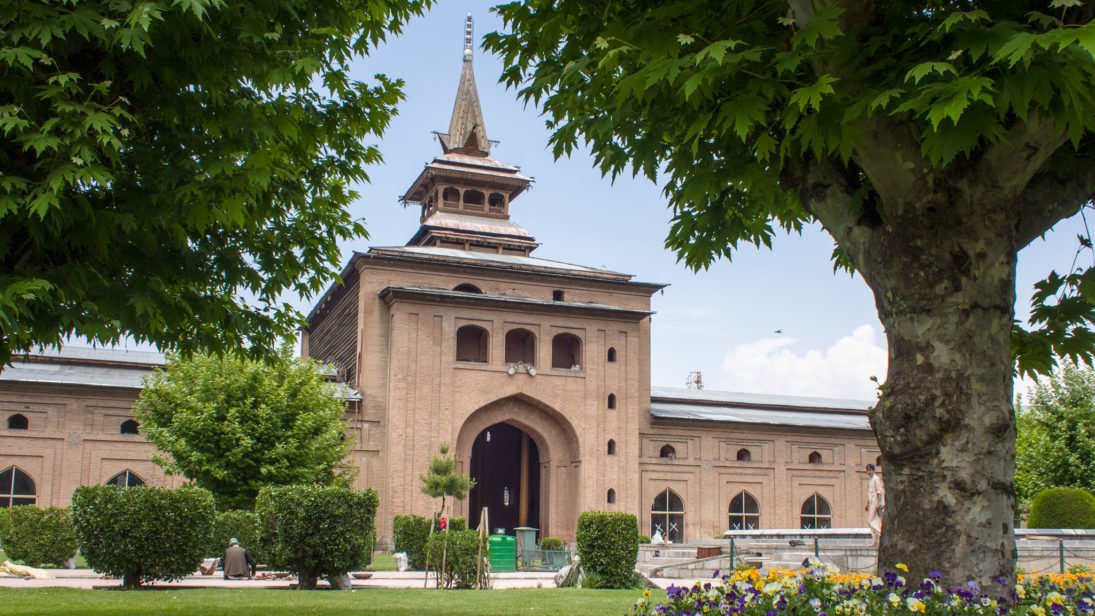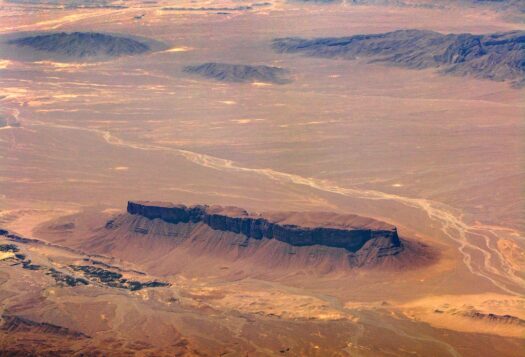
As the “deadliest year in a decade” was coming to an end for Kashmir, on December 28th a group of youngsters with their faces covered emerged in Srinagar’s historic Jamia Masjid and unfurled black flags—identified with the Islamic State of Iraq and Syria (ISIS) or Daesh—and raised pro-Dawlat-ul-Islam (Islamic State) slogans. Parties across the wide spectrum of politics in Kashmir unanimously condemned the act as a desecration of the grand mosque. Mehbooba Mufti, former Chief Minister tweeted saying that, “Appearance of a few youth with IS flag in Srinagar Jam[i]a Masjid is desecration of the most important institution of Kashmir’s religious, social life” while conveying her “outrage” to Kashmiri pro-self-determination leader Mirwaiz Umar Farooq. It was “ironical”, Mirwaiz later said, for her to feel outraged as the same mosque was shut down by her government for 18 weeks in 2016 and on a number of occasions thereafter. Whatever the level of irony may be, it is clear that the political parties on both sides of the divide—pro-India and pro-self-determination—are feeling the pressure of the raging Islamic State slogans. No side can afford to neglect this heat.
Religion has played a critical role in shaping the modern history of Kashmir, and Jamia Masjid stands at the center of this history as one of the lead protagonists. An organized political movement was launched from this mosque to abolish a de facto Hindu Rashtra in the 1930s. The Dogra state, which came into existence with the Treaty of Amritsar in 1846 when the British negotiated the sovereignty over Kashmir “with the person of the ruler and not with the people”, used Hinduism to legitimize its rule. This led its Muslim subjects to organize themselves under the banner of Islam. The Muslim leadership of that era considered the discriminatory practices of the Dogra regime as a threat to Islam.
There is a fundamental difference between the way the armed struggle against India has been carried out in Kashmir and the way in which ISIS and its affiliates want to establish an Islamic State.
Since then, the Jamia Masjid has been a witness to various shifts in the politics of the valley. Sheikh Abdullah, the founder of National Conference and the most controversial political figure in the history of Kashmir, used Islamic metaphors and symbols to gather mass support while simultaneously expressing his admiration for secular politics. Since its inception, insurgency in Kashmir has been characterized by Indian observers as a religious movement seeking to establish an Islamic State at the behest of Pakistan. Meanwhile, pro-self-determination Hurriyat Conference and its different constituents, as well as insurgent groups like Hizb-ul-Mujahideen, have always maintained that the armed struggle in Kashmir against the Indian state is a political one, not religious in nature. However, even that has not stopped them from deriving references from Islam to ensure the continuity of the armed insurgency.
Days after the masked youth raised pro-Islamic State slogans, Mirwaiz Umar Farooq led a public rally against what he calls the “desecration” of the mosque and also headed a drive to purify the place. “Islam Zindabad” (long live Islam) slogans were raised in the rally by supporters of Mirwaiz. Those who waved the black flag raised pro-Islamic state slogans and those who participated in the protest led by Mirwaiz both believe in the longevity of Islam and use it to call out the other. The pro-ISIS youth call the Hurriyat, an alliance of separatist parties and leaders, and its supporters believers of taghuti nizam (in Islamic terminology, an order not based on the word of Allah) while the latter call out the former for working “at the behest of some anti-Islamic agencies.”
Who is representing the true version of Islam here? This is a difficult question to answer, as both sides believe they are. However, politically speaking, the Hurriyat is using Islam as a means to mobilize mass support for their movement of self-determination while ISIS sees it as an end towards establishing an Islamic State. Their means, however, are hardly Islamic. There is a fundamental difference between the way the armed struggle against India has been carried out in Kashmir and the way in which ISIS and its affiliates want to establish an Islamic State.

The conflict in and over Kashmir, which has been seen to be a “tempting prospect” for ISIS by international observers, has claimed over 4,000 lives in the last decade. Historically, the insurgency in Kashmir is a case of “revolution from below” involving the use of religion to mobilize people at the grassroots level for a cause that is purely political in nature. The template of ISIS, on the contrary, can be called a “revolution from above,” as it seeks to establish the writ of an Islamic State without any popular support—or at least without any projection of it. After all, ISIS has announced its presence in South Asia by carrying out suicide attacks in Afghanistan and Pakistan.
The ISIS approach suggests that enemies within the population should be treated on par with those outside. Yet the identification of an enemy within the population is a tricky task with which the Kashmiri collective conscience may not be comfortable. In the past, incidents of mob violence have been condemned by the pro-self-determination leadership in Kashmir. Moreover, pro-Dawlat-ul-Islam sloganeering and flag waving is largely concentrated in urban centers – mainly Srinagar – but has recently been seen south of the capital as well.
For this reason, ISIS and its affiliates have so far failed to replicate their model of violence in Kashmir. The black flags of the Islamic State first appeared in 2012, and in the last six years insurgent groups who have sworn their allegiance to ISIS have failed to gather beyond twenty members in the state. Other organizations like the Hizb-ul-Mujahideen, Lashkar-e-Taiba, and Jaish-e-Mohammad, on the other hand, have maintained a sizeable membership given their long history of targeting that which is symbolic of the Indian state. However, it is only recently that the Hizb-ul-Mujahideen have started to broadcast their acts of violence against civilian informers of the Indian Army, which may also be a sign of an increasing group competition.
The growing black flag waving incidents…indicate an emerging ideological proclivity towards ISIS which, if ignored, can turn into the proverbial spark burning down the house of the Hurriyat and other established “representatives” of the armed movement.
Tactically speaking, ISIS appears unable to do any physical damage in Kashmir for now. A lack of arms and ammunition and members to carry out attacks impedes their progression. Although ISIS has gained popularity by their military victories elsewhere, in Kashmir their presence is mostly symbolic. However, given the complex relationship of insurgency and religion in valley, ISIS can pose a threat if the ends and means debate is not settled. In order for that to happen, the Hurriyat conference should come clean about the ends they seek, not just hinge their rhetoric on the means of their movement. The growing black flag waving incidents, like the one witnessed on December 28th in the Jamia Masjid, indicate an emerging ideological proclivity towards ISIS which, if ignored, can turn into the proverbial spark burning down the house of the Hurriyat and other established “representatives” of the armed movement.
Click here to read this article in Urdu.
Image 1: Wikimedia Commons
Image 2: Tauseef Mustafa via Getty Images


